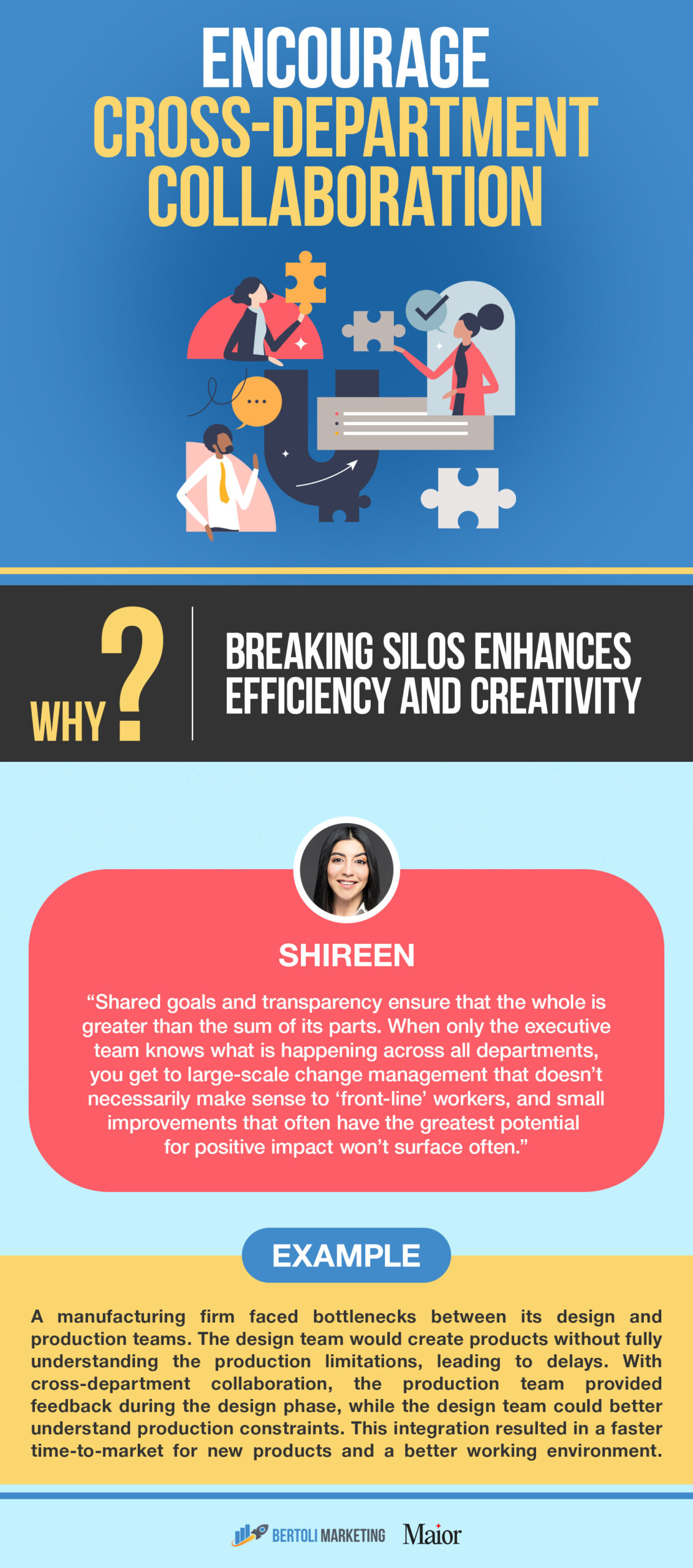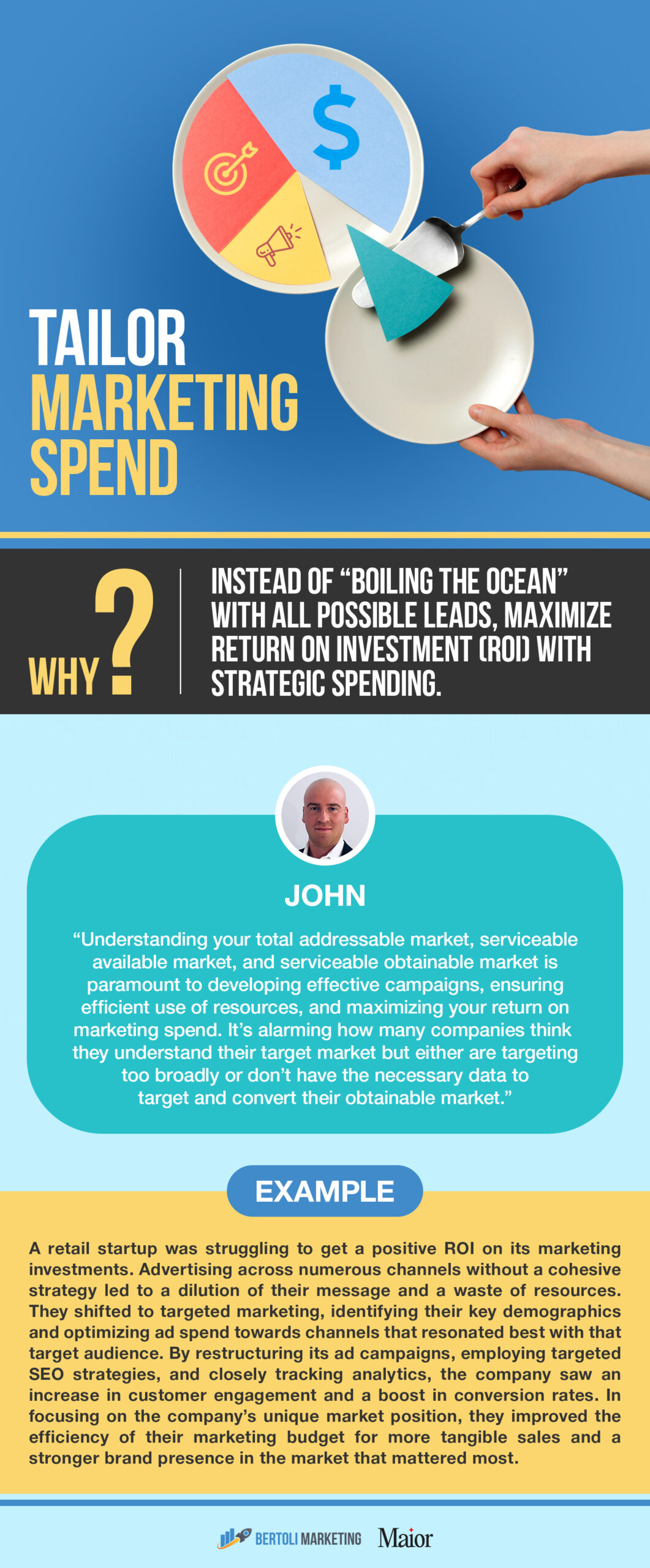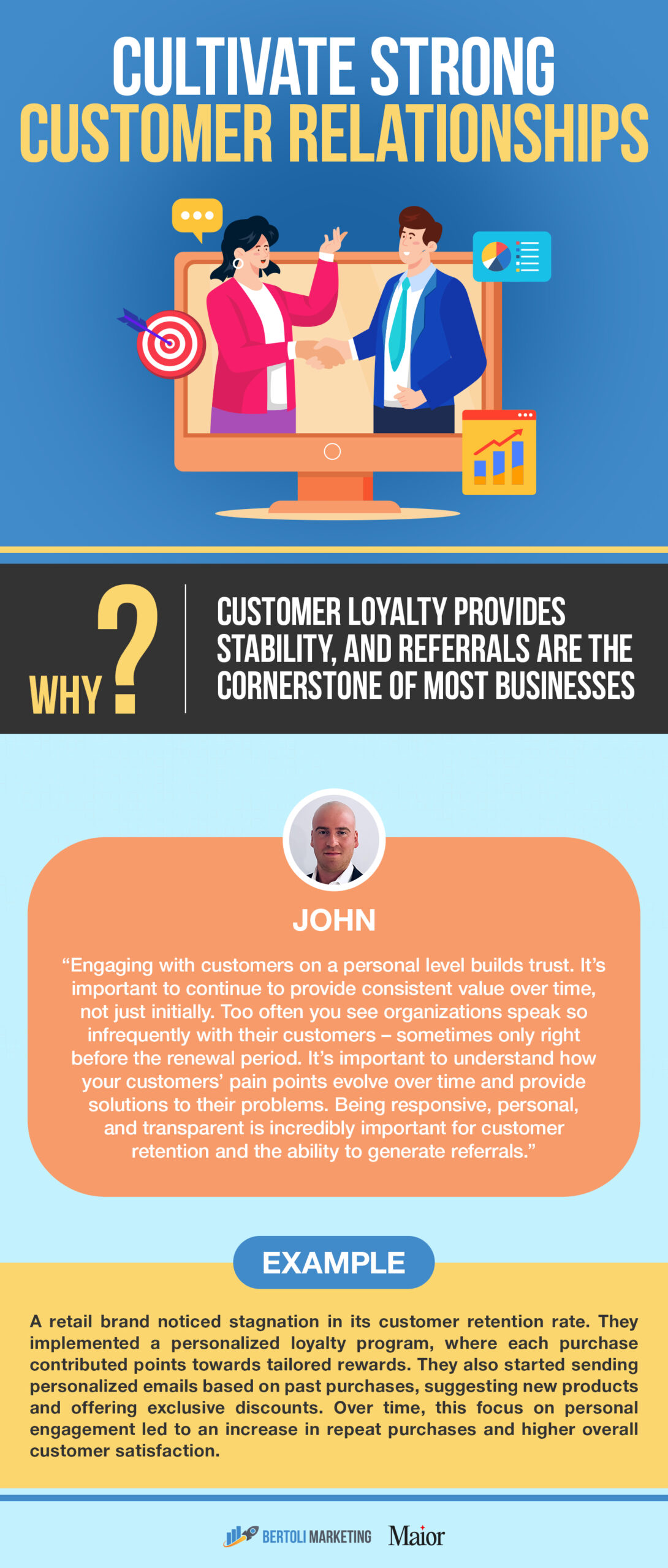
“Doing more with less” has become the new corporate mantra as budgets tighten and corporations are scrutinized by boards and shareholders to create a closer and faster relationship between actions and results given the uncertain economic climate. In this context, Shireen Hilal (CEO of Maior, a consulting firm specializing in revenue generation, strategies for success, and process optimization) and John Bertoli (CEO of Bertoli Marketing, known for its fractional CMO, demand generation, and AI-powered website optimization services) share practical tips and give real-world examples of how to put “more with less” into action. As the strategies and examples below show, having limited resources can often lead to a team that’s more focused and deliberate—a clear advantage in any economy.
Why: Agility fosters flexibility and responsiveness.
Shireen: “Iterative improvements allow for continuous refinement, ensuring you’re always aligned with market needs and that changes are digestible and can be easily peeled back if they aren’t successful.”
John: “Agile marketing uses data-driven insights to adapt to the customer’s ever-changing behavior, developing customer-centric campaigns and content that aligns to the buying stage and the current pain points of the prospect to ensure effective engagement that leads to pipeline.”
Example: An e-commerce company facing high competition noticed its marketing strategies were becoming outdated too quickly. They shifted to agile bi-weekly marketing sprints, focusing on real-time data and customer feedback. The marketing team was now able to make quicker adjustments to their campaigns, such as shifting resources to trending products or pausing underperforming ads, resulting in an increase in conversion rates and a more engaged customer base.

Why: Breaking silos enhances efficiency and creativity.
Shireen: “Shared goals and transparency ensure that the whole is greater than the sum of its parts. When only the executive team knows what is happening across all departments, you get to large-scale change management that doesn’t necessarily make sense to ‘front-line’ workers, and small improvements that often have the greatest potential for positive impact won’t surface often.”
Example: A manufacturing firm faced bottlenecks between its design and production teams. The design team would create products without fully understanding the production limitations, leading to delays. With cross-department collaboration, the production team provided feedback during the design phase, while the design team could better understand production constraints. This integration resulted in a faster time-to-market for new products and a better working environment.

Why: Instead of “boiling the ocean” with all possible leads, maximize return on investment (ROI) with strategic spending.
John: “Understanding your total addressable market, serviceable available market, and serviceable obtainable market is paramount to developing effective campaigns, ensuring efficient use of resources, and maximizing your return on marketing spend. It’s alarming how many companies think they understand their target market but either are targeting too broadly or don’t have the necessary data to target and convert their obtainable market.”
Example: A retail startup was struggling to get a positive ROI on its marketing investments. Advertising across numerous channels without a cohesive strategy led to a dilution of their message and a waste of resources. They shifted to targeted marketing, identifying their key demographics and optimizing ad spend towards channels that resonated best with that target audience. By restructuring its ad campaigns, employing targeted SEO strategies, and closely tracking analytics, the company saw an increase in customer engagement and a boost in conversion rates. In focusing on the company’s unique market position, they improved the efficiency of their marketing budget for more tangible sales and a stronger brand presence in the market that mattered most.

Why: A combination of full-time and fractional executives ensures fresh, industry-wide perspective and allows for significant cost savings.
Shireen: “A fractional COO can quickly address specific challenges without the need for a full-time commitment. There’s the added benefit of not succumbing to the ‘slings and arrows’ of internal politics, especially if change is needed to move to the next level. It also just fits most growth trajectories – why settle for all or nothing? If you want someone with depth of experience, that comes at a hefty full-time price tag. You can get what you need for less and probably don’t need 40+ hours a week to start.”
John: “Fractional marketing services can support organizations at various stages – either before they hire their first marketing employee but understand the importance of marketing and the need for the function, or if they have a small team that just isn’t generating the desired results. Outside perspective, either managing the entire marketing team or working closely with an existing marketing leader, can help tweak existing campaigns or layer on additional, effective campaigns to what’s already working. This all comes at a significant reduction in cost compared to bringing on a full time employee.”
Example: A growing fintech company faced challenges in scaling its operations, with departments becoming more siloed as they grew and a lack of standardized procedures across the company. Recognizing the need for leadership and process improvement but hesitant to hire another full-time executive, they engaged a fractional COO. This expert quickly assessed the situation and established clear communication protocols, created unified procedures tailored to the company’s unique needs, and helped the CEO to develop a strategy for the next year. The improvement in collaboration and efficiency came quickly and the strategic move allowed them to push to the next level in organizational development, paving the way for other key hires once it was clear what would be needed to achieve the company’s strategy and where gaps existed.

Why: Customer loyalty provides stability, and referrals are the cornerstone of most businesses.
John: “Engaging with customers on a personal level builds trust. It’s important to continue to provide consistent value over time, not just initially. Too often you see organizations speak so infrequently with their customers – sometimes only right before the renewal period. It’s important to understand how your customers’ pain points evolve over time and provide solutions to their problems. Being responsive, personal, and transparent is incredibly important for customer retention and the ability to generate referrals.”
Example: A retail brand noticed stagnation in its customer retention rate. They implemented a personalized loyalty program, where each purchase contributed points towards tailored rewards. They also started sending personalized emails based on past purchases, suggesting new products and offering exclusive discounts. Over time, this focus on personal engagement led to an increase in repeat purchases and higher overall customer satisfaction.

In a fluctuating economic landscape, the call to “do more with less” isn’t just a mantra—it’s an invitation to forge ahead, innovate, and stand resilient. It’s about harnessing creative leadership, pivoting swiftly in a dynamic marketplace, and making every penny count. Through smart collaboration and genuine customer engagement, businesses don’t just adapt; they set themselves apart, turning challenges into unique selling points.
About Shireen and Maior: Shireen is the founder and CEO of Maior Strategic Consulting, a consulting firm that helps business owners and executives frustrated by flat revenue and falling margins, stuck putting out fires instead of fueling growth, or disappointed by outdated strategies that no longer deliver. Shireen founded Maior after practicing law for 10 years at AmLaw100 firms, serving as the inaugural COO of a national business, leading the growth division of a start-up consulting firm, serving in leadership roles at KPMG and BDO, and on the premise that “good enough” was never good enough for her. If good enough isn’t enough for your business either, you can learn more about Maior at www.maiorconsultants.com.
About John and Bertoli Marketing: Bertoli Marketing provides fractional CMO, demand generation, and AI-powered website optimization services to startups and small businesses who either lack the functional marketing expertise, or are not able to scale properly because they don’t have the necessary infrastructure and strategy in place. Our proven methodology evaluates the organization’s marketing mix to understand what’s working and what needs improvement, then we build out an effective strategy to increase the website conversion rate, drive more engagement, and accelerate pipeline. We are so confident in our strategy, we guarantee an increase in your website conversion rate and lead generation in the first 6 months of engagement, or we’ll provide an additional 6 months of support for free! For more information, please visit www.bertolimarketing.com.